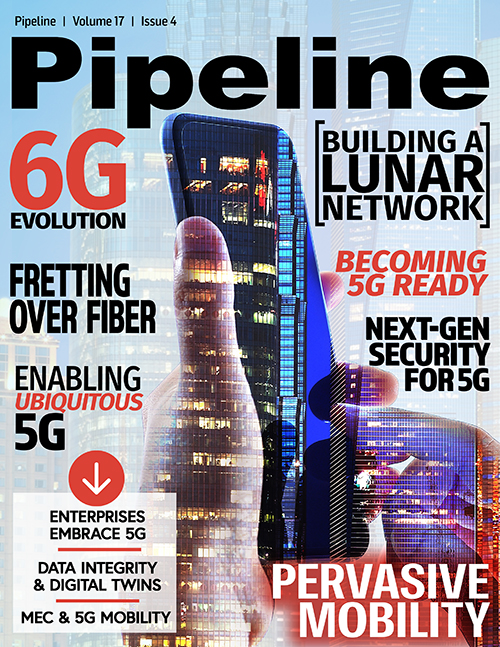Fretting Over Fiber for Next-Gen Wireless Services
Get your head in the clouds
Put simply, the cloud has transformed connectivity. More and more, enterprises are willing to make use of cloud-based services for everything from web hosting to email, databases and software-as-a-service applications. Where traditionally companies would have sought to build and use their own WANs, or use MPLS circuits and services, the public Internet and cloud services are an architectural certainty that businesses are moving toward.
We should also take a moment to acknowledge the increasingly important role that the public Internet plays in enabling enterprises to reach different services, such as those in the cloud, or in other parts of the Internet ecosystem. A network built today would need to consider its role in maintaining traffic flows for these services towards the public Internet even though most of them would be outside of each operator’s control. It should be mentioned, though, that an operator’s part of the public Internet (AS Network) should not be underestimated when it comes to delivering quality network services in the future.
Is leasing the leveler?
Many carriers have made a successful business out of leasing connectivity to build their networks and respond to demand. While on the surface this could seem like a great way to build a network, in today’s market it presents challenges, including long-term sustainability and serving customers.
One of the biggest challenges is the simple economics of cost and price. The market price per Mb, which is decreasing, makes it harder for networks built on pure leasing models to make a profit once their operational costs are taken into account. They really need to negotiate hard every year to keep their cost lower than the market price per Mb. This is particularly challenging when some of the other operational costs such as colocation fees and power costs remain static or even increase, rather than decline.
For both lease operators and their customers there is a bigger problem: how network problems and outages are handled and resolved. This extends to who in the supply chain is responsible and how quickly resolution can take place. Ultimately, only a fiber owner that has full control of a repair has all relevant knowledge about the possible down time for a fault. In a world where outages have an increased impact on businesses, this is a key consideration for all parties.
It should be noted that a leased network operator can without question achieve a very flexible set-up by virtue of its ability to build its network from different suppliers. A fiber being built to the wrong location will have a much more negative impact than a one-year lease to the wrong site. But this requires a delicate balancing act: a comprehensive procurement management program with strong operator relationships around the world. The bigger a leased operator becomes, the harder it is to manage those supplier relationships and maintain consistent quality.
Building a fiber future
Ultimately, when you own the fiber on the right routes, you are only limited by the equipment that connects those fibers and—more commonly today—the software services that run on them and keep the network running.
The future will demand more transparency in networks, and indeed with customers. It will undoubtedly favor fiber owners and help them offer a host of additional services to customers. Operators are only just starting to use their own data to better model their networks so they, for example, can predict where the next fault will occur or route traffic more optimally. Internal data enables operators to ensure a more robust network ready for the future.
The more transparent any operator can be, the easier it will be for a customer to take advantage of the services provided. APIs are even making it possible for customers to procure, integrate and configure services directly, as well as review traffic data for their own purposes. While leased network operators obviously can offer the same form of access to their own systems through APIs, they will find it harder to provide the same network-wide level of insight and transparency.
If Telia Carrier were starting again today, our plan would be the same: to build the best Tier 1 network based on the best technology. We would without question build or procure fibers; while an expensive undertaking, it is ultimately the best investment an operator can make in the long term. Where the business case does not stack up for fiber, we would start with a lease to satisfy customer need, but the ultimate goal over time would always be to own the network to maximize performance and cost.



















